

James Wong
2026 Audi Q5 review: Quick drive
5 Days Ago
Yes, the Mitsubishi ASX is still sold as a 'new' car 15 years on. Can a distinctive new 'Street' pack spice things up?



Quickly see how this car stacks up against its competition. Select any benchmark to see more details.
Where expert car reviews meet expert car buying – CarExpert gives you trusted advice, personalised service and real savings on your next new car.
Some things never change – even in an industry that seems to be moving at light speed right now.

The 2024 Mitsubishi ASX seems to not acknowledge time. It’s been on sale in its current generation since I was still in school, and is based on a platform that dates back to the Japanese brand’s ties with Daimler in the mid-2000s.
The venerable Mitsubishi crossover remains a strong seller despite its advancing years and increasing competition, largely from value-focused Chinese brands.
Mitsubishi registered 9176 new ASX units in Australia in 2023 – which while down 28.0 per cent on the 12,753 units and fourth-placed year-end finish from 2022, still accounted for 6.2 per cent of the mainstream small SUV segment. Not bad for an old duck.
New for MY24 is the ES Street accessory pack on test here, bringing “a unique aesthetic” to the ASX, donning a range of black and red-themed accessories to give it an almost Fast and Furious or Need for Speed look.
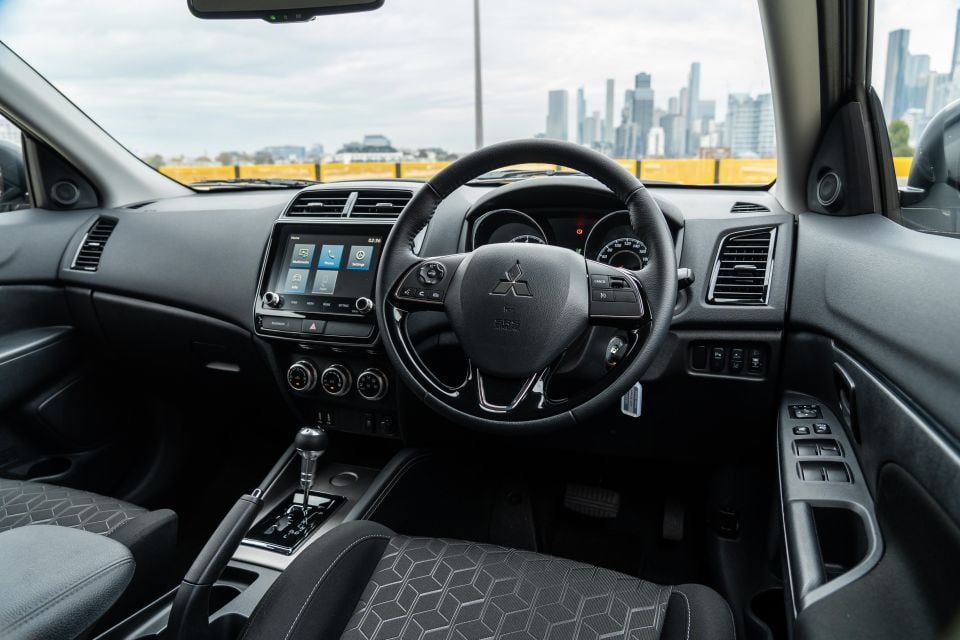
For $2500 over the regular ES it’s quite a striking, if polarising set of add-ons which may not be to all tastes. But we have to give credit to Mitsubishi Australia for daring to do something different and bring a bit of JDM flavour.
But, we’re here to find out if the ASX is still worth a look nearly 15 years on from the original launch. Now on its third facelift, should this still be on your compact SUV shortlist?
The 2024 Mitsubishi ASX lineup starts from $24,490 before on-road costs, with this ES Street accessorised version priced from $30,490 plus on-roads.

| Model Variant | Price before on-roads |
|---|---|
| 2024 Mitsubishi ASX GS 2.0 6MT | $24,490 |
| 2024 Mitsubishi ASX GS 2.0 CVT | $26,740 |
| 2024 Mitsubishi ASX ES 2.0 CVT | $27,990 |
| 2024 Mitsubishi ASX MR 2.0 CVT | $29,740 |
| 2024 Mitsubishi ASX ES Street 2.0 CVT | $30,490 |
| 2024 Mitsubishi ASX LS 2.0 CVT | $30,440 |
| 2024 Mitsubishi ASX GSR 2.4 CVT | $32,740 |
| 2024 Mitsubishi ASX Exceed 2.4 CVT | $35,240 |
To see how the Mitsubishi ASX lines up against the competition, check out our comparison tool.
Buy your new car without the stress. It's fast, simple and completely free.

Great service from Travis and team, second time I have used this business would not hesitate to recommend them to anyone
Craig C.
Purchased a Ford Ranger in Sunshine Coast, QLD
CarExpert helped Craig save $7,224 on his Ford Ranger, now let us save you on your next new car.
Get your BEST priceUnlike the ASX exterior which has gone through a number of design revisions over the years, the interior has remained largely unchanged save for some detail and tech upgrades.

The centre stack has been modified to accommodate different screens, with the latest being an 8.0-inch touchscreen unit shared with other Mitsubishi models like the Eclipse Cross and Pajero Sport.
Being based on the one-up-from-base ES, there’s cloth trim and minimal luxury touches, but everything is functional, feels well built (for the most part), and is very conventional compared to something like a GWM Haval Jolion.
The upper sections of the cabin are finished with soft-touch plastics, and the thin-rimmed leather steering wheel is a throwback to a different era of Mitsubishi products. Likewise the tiny supervision display between the analogue dials dates back to last decade, and still doesn’t feature a digital speedometer readout which is disappointing.
I like the chunky rotary dials for the climate control, as well as the padded leatherette accents where your knees come to rest on either side of the centre console. Mitsubishi has nicely refined the design over the years but it still feels very dated in 2024.




While a little old hat, everything is nice and simple – and might be refreshing for those wanting something a little back-to-basics. That said, this ES Street is $30,000 before on-road costs and plenty of cars at a similar price offer more upmarket cockpits, as well as more up-to-date tech and design.
While the TFT display in the instrument cluster is disappointingly basic, the touchscreen offers wired Apple CarPlay and Android Auto in addition to DAB radio. Bluetooth phone streaming also features, but this was the first time in a while any person I spoke to on the phone (with CarPlay or Bluetooth) complained about shocking audio quality from my end – not good if you’re making a lot of calls while on the road.
It’s otherwise a very basic system, with features like embedded satellite navigation spared for the top-spec Exceed. Audio quality in this ES Street wasn’t great either, sticking with a tinny four-speaker system instead of the six-speaker suite in the MR, LS and GSR grades, let alone the Exceed’s nine-speaker Rockford Fosgate premium audio.
Really, if you’re a tech nut I don’t think you’d be looking at this above most other options in the class anyway…


Storage is at least pretty good. There’s a deep slot ahead of the shifter to stow your phone and wallet right near the USB-A ports if you’re hooked up to smartphone mirroring, decent cupholders in the centre console as well as deep door pockets with bottle holders.
The manual handbrake eats into the centre console and is quite old-school. A nicely sized storage bin between the front seats lives under a padded armrest, though the lid itself doesn’t feel super solid and wobbles when opened.
Mitsubishi’s older switchgear again is a throwback to the late 2000s, but it’s all clearly labelled and pretty easy to use. The chunky buttons and solid actions are also nice in a world of fiddly touch controls.
Oh and before I forget – the ES Street picks up an aluminium and leather gear selector that looks straight out of the Ralliart catalogue. It has chilly bits of real aluminium and is really nice to hold and shift through the stepped gates.


Rear seat space has long been an ASX strength relative to the segment, as its taller and boxy proportions lend decent room for adults in the second row. I’m 6’1 and can fit behind my own driving position fine, so two adults will be comfy in the back.
I have squeezed three across in an ASX before and while not really that pleasant, it can be done. Growing families with kids, however, will be catered for nicely too. It’s a proper four seater and can be a fiver at a pinch.
Remembering the ES Street’s lower tier in the lineup, limited amenities are to be expected. A fold-down centre armrest, map pocket behind the front passenger seat and bottle holders in the doors are all good to have. There are no rear air vents, and you have to step up to the LS to get USB power outlets in the rear.
For parents, there are ISOFIX anchors on the outboard seats as well as top-tethers behind every second-row seat.


Cargo capacity in the ASX is rated at a healthy 393 litres (VDA), expanding to 1193 litres (1143L Exceed) with the second row folded. It’s no longer best in class, but still bigger than most similarly sized hatchbacks.
Mitsubishi also quotes dimensions for the cargo area: 735-1475mm length (5-seat to 2-seat), 1355mm width, 750mm height and 1000mm between the wheel arches. A space saver spare lives under the boot floor.
| Dimension | Mitsubishi ASX |
|---|---|
| Length | 4365mm |
| Width | 1810mm |
| Height | 1640mm |
| Wheelbase | 2670mm |
| Boot capacity (VDA) | 393L (5 seat) 1143-1193L (2 seat) |
| Kerb weight | 1342-1437kg |
| Gross Vehicle Mass (GVM) | 1970kg |
To see how the Mitsubishi ASX lines up against the competition, check out our comparison tool.
Two naturally aspirated petrol engines are available in the ASX depending on variant; the Street features the less powerful option.
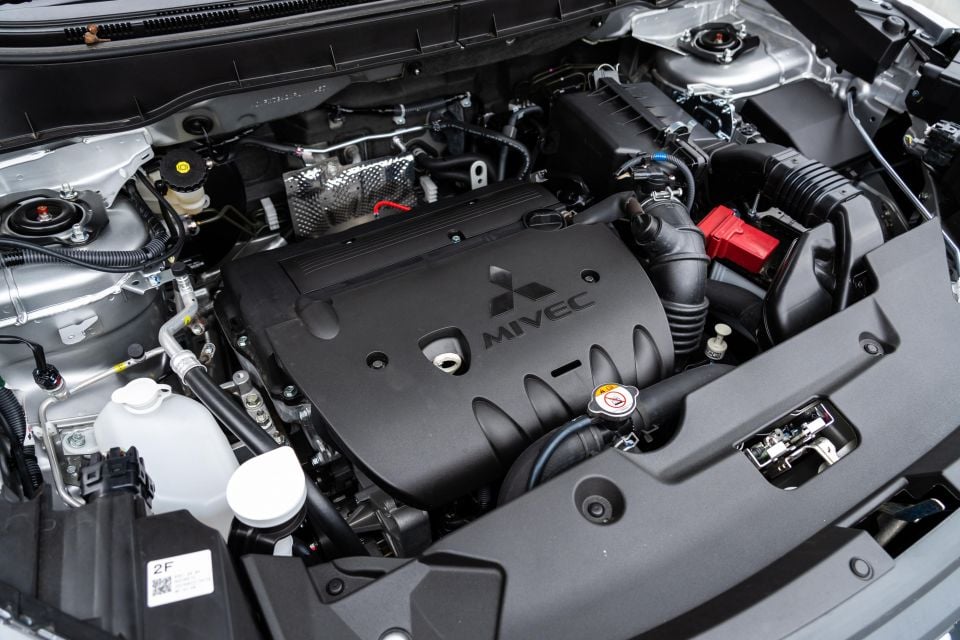
| Mitsubishi ASX 2.0 2WD | |
|---|---|
| Engine | 2.0L 4cyl |
| Power | 110kW (6000rpm) |
| Engine torque | 197Nm (4200rpm) |
| Transmission | CVT automatic |
| Driven wheels | Front |
| Weight | 1342-1389kg (kerb) |
| Fuel economy (claim) | 7.7L/100km (6MT) 7.6L/100km (CVT) |
| Fuel tank size | 63 litres |
| Fuel requirement | 91 RON |
| CO2 emissions | 179g/km (6MT) 176g/km (CVT) |
| Emissions standard | Euro 5 |
| Maximum tow capacity | 1300kg (braked) |
| Maximum towball download | 130kg |
We had an issue with the trip computer resetting with every drive (and following the loan were brought across how to change that setting), but fuel consumption hovered around the 9-10L/100km mark when doing city and urban driving and would drop to about to the 7-8L/100km mark with more freeway use.
The 63L fuel tank should ensure decent range between fills, particularly if you’re going to spend more time on the highway, but the lack of idle stop-start tech means the ASX gets quite thirsty around town.
To see how the Mitsubishi ASX lines up against the competition, check out our comparison tool.
I’ll get this out of the way – don’t buy an ASX ES Street thinking it’s going to drive like a Ralliart-lite or something.

Lower grades of the ASX get an atmo 2.0-litre four which in reality has the same kind of outputs and revving nature as my old 2000 Honda CR-V – that had 108kW and 182Nm some 25 years ago, but with a four-speed slushbox.
The ASX is aided somewhat by the CVT, though this driveline has been around for quite some time and definitely feels that way.
It offers decent response off the line and has a burbly little thrum to the note, but try to get anywhere quickly and you’ll see the tacho flare and your ears will be met with thrashy tones. In 2.0-litre guise, the ASX is best kept to more urban commutes and sedate driving behaviour.
To be honest it’s pretty agreeable in mundane daily driving, and offers decent performance for what is a 20-year-old drivetrain, save for the odd elastic feeling at lower speeds or setting off from the CVT.
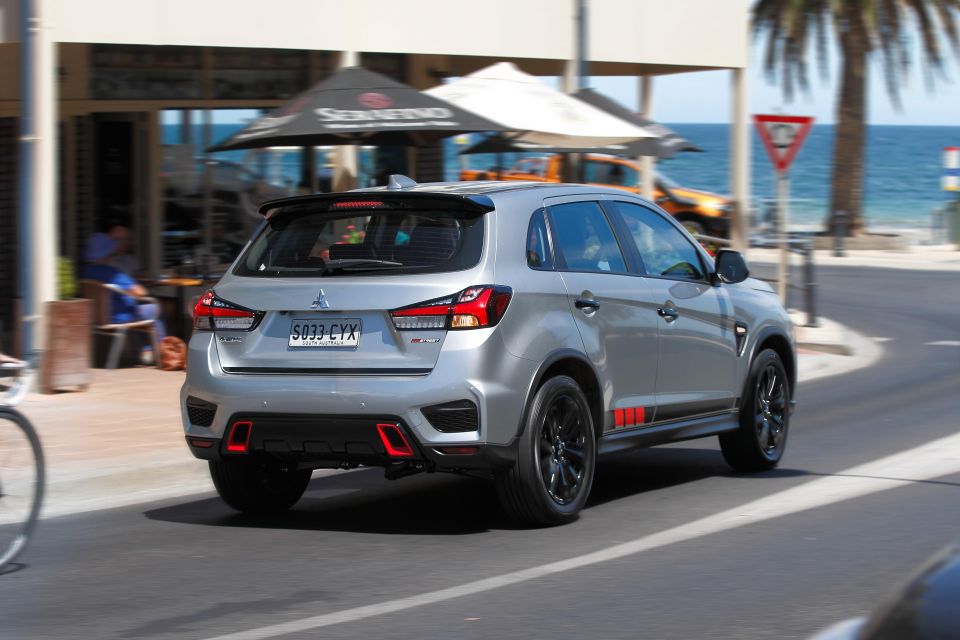
Once at a cruise the ASX drops revs low and settles nicely. Again it’s a pretty agreeable and fuss-free thing to live with, but it’s hardly engaging nor a standout performer.
General refinement is fine provided you aren’t wringing its neck, and there’s acceptable wind and road noise intrusion once you get onto the highway or freeway. Coarse-chip stuff does make it a little echoey, but it’s hardly worst in class for that kind of thing.
The steering is a little heavier than your might expect for a smaller SUV focused on the city, but that’s also likely down to the car’s age. It’s pretty accurate, but can be a little inconsistent in its feedback depending on speed and can be upset by bumps in the road.
As for the ride, the ASX is on the firmer side, but it doesn’t feel particularly sporty or engaging in the way it handles. It can be a little sharper over harder hits in the city, but feels pretty tied down in most daily scenarios… and a little top heavy in the bends.
Put simply, it’s outclassed by newer and more advanced competition, namely the likes of the Mazda CX-30 and Skoda Kamiq – both of which can be had for similar money these days.

Another area where the ASX is showing its age is driver assistance technologies, of which there are few. Despite having most basics covered higher up in the range, the GS and ES grades make do with low-speed AEB and lane departure warning, but that’s about it.
The lane departure warning merely beeps at you if you’re drifting over the lane marking but won’t intervene, and you’ll need to step up to the LS if you want blind-spot monitoring and rear cross-traffic alert.
Perhaps even more puzzling is the fact that the Eclipse Cross, which rides on a version of the same platform, offers extended functionality like adaptive cruise control.
It’s a shame Mitsubishi hasn’t been able to keep one of its oldest and top-selling models up to date when the tech is available – surely just make everything available from the base level, or at least most of it.
The ASX still offers a pretty big lineup relative to some rivals, and the ES Street is only a couple of rungs up from the bottom of the ladder.




Where expert car reviews meet expert car buying – CarExpert gives you trusted advice, personalised service and real savings on your next new car.
ASX GS features:
ASX ES adds:
ASX ES Street adds:


ASX LS adds (over ES):
ASX MR adds (over ES):
ASX GSR adds (over LS):
ASX Exceed adds:
The Mitsubishi ASX once wore a 2014-dated five-star ANCAP safety rating, though this has now lapsed.
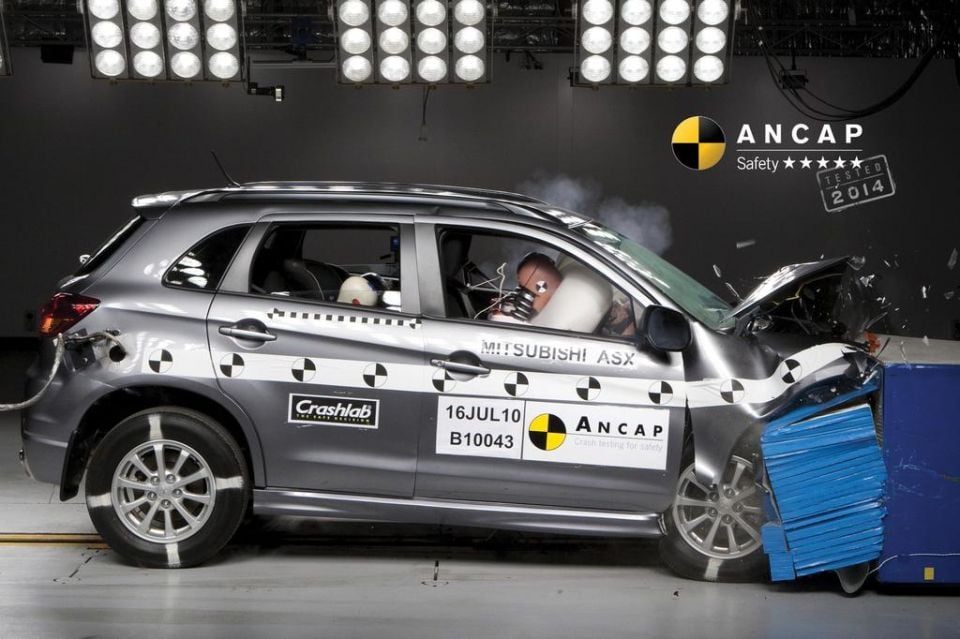
Against much older criteria, the ASX managed a frontal offset score of 14.13 out of 16 and a side impact score of 16 out of 16. Whiplash and pedestrian protection were rated Good and Acceptable, respectively.
Standard safety equipment includes:
ASX ES and above add:
ASX LS and above add:
Mitsubishi offers 10 years of capped-price servicing, as well as a lengthy 10-year, 200,000km warranty if you service your ASX with Mitsubishi – servicing out of network reduces that to five years and 100,000km.

Scheduled servicing is required every 12 months or 15,000 kilometres – whichever comes first.
| Service Interval | Price |
|---|---|
| 12 months/15,000km | $309 |
| 24 months/30,000km | $409 |
| 36 months/45,000km | $409 |
| 48 months/60,000km | $409 |
| 60 months/75,000km | $409 |
| 72 months/90,000km | $719 |
| 84 months/105,000km | $409 |
| 96 months/120,000km | $719 |
| 108 months/135,000km | $509 |
| 120 months/150,000km | $719 |
| Total | $5020 |
Buy your new car without the stress. It's fast, simple and completely free.

Great service from Travis and team, second time I have used this business would not hesitate to recommend them to anyone
Craig C.
Purchased a Ford Ranger in Sunshine Coast, QLD
CarExpert helped Craig save $7,224 on his Ford Ranger, now let us save you on your next new car.
Get your BEST priceWhile this new accessory pack may be “for the streets”, I don’t think this is the Mitsubishi ASX to buy.

Given its age and limited assistance tech suite, the GS (from $24,490) or ES (from $27,990) serve as good legacy alternatives to Chinese rivals like the GWM Haval Jolion or MG ZST if you need a smaller crossover on a tight budget.
Once you break that $30,000 barrier you open the door to new, high-tech, powerful rivals which make a stronger case in general than the ASX does in its upper tiers. The ASX does still offer second-row accommodation and boot capacity that beats a number of rivals at the price point, however.
There’s also the question of “what’s next” for the ASX. Mitsubishi Australia doesn’t seem able to bring the rebadged Renault Captur with the same name available in Europe, and there are no electrified options available in Japan.
For now though, if you’re after cheap transport with the peace of mind of a super long warranty, the Mitsubishi ASX remains a decent if ageing option. Just keep to the variants under the $30,000 barrier.

Click the images for the full gallery
MORE: Buy a Mitsubishi ASX MORE: Everything Mitsubishi ASX
Where expert car reviews meet expert car buying – CarExpert gives you trusted advice, personalised service and real savings on your next new car.
James is an automotive journalist based in Melbourne, Australia. Before joining CarExpert.com.au in 2020, James has worked at leading auto media outlets including Carsales and CarAdvice, as well as at Pulse agency for Ford Australia's communications team. In 2019 James made Mumbrella's 'Top 20 most prolific web authors in Australia' list after publishing 1,360 articles between March 1, 2018 and February 28, 2019 for CarAdvice. James is also an Ambassador for Drive Against Depression – an Australian charity whose mission is to support mental wellness through the freedom of driving and a shared love of cars.


James Wong
5 Days Ago


James Wong
5 Days Ago
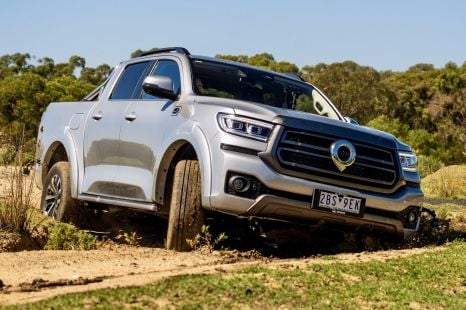

Max Davies
4 Days Ago
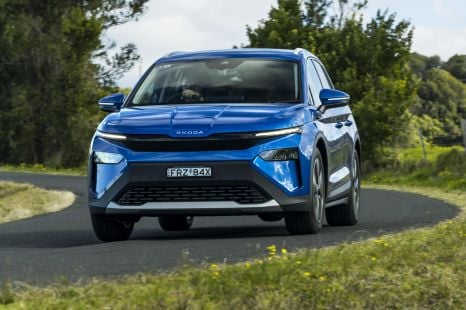

Josh Nevett
2 Days Ago


Max Davies
2 Days Ago


William Stopford
1 Day Ago